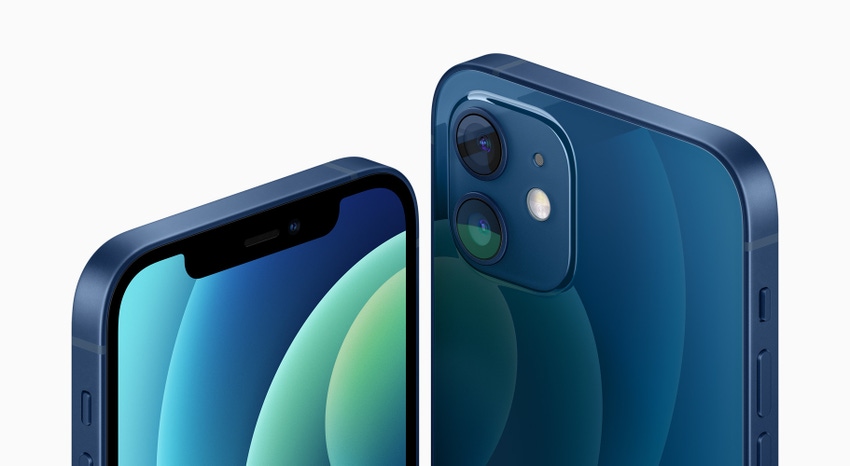Apple finally gets around to 5G
Gadget giant Apple waited a bit longer than usual for its annual iPhone refresh, which was presumably to make sure it got its first 5G ones right.
October 14, 2020

Gadget giant Apple waited a bit longer than usual for its annual iPhone refresh, which was presumably to make sure it got its first 5G ones right.
While 5G was front and centre of the iPhone 12 family (there are four of them), the source of this new capability was strangely absent from any Apple announcements. That’s presumably because Apple was forced to capitulate in its vexatious legal action against the only 5G modem player in town, Qualcomm, last year and is still butt-hurt over the matter.
If full diplomatic relations were restored, we might even have seen Apple invite a Qualcomm exec onto the stage, as it did with Verizon CEO Hans Vestberg, to bang on about how much better the world is thanks to their products. This not happen and there is no mention whatsoever of the modem-maker in the press releases or spec sheets.
Apple probably has to pinch its nose whenever it receives a shipment of Snapdragon X55s and, we would imagine, only interacts with Qualcomm via their respective lawyers. It has to be said that Apple has done a great job of designing its own SoCs, but the presence of a third party component made by possibly the only supplier it has failed to beat down on price clearly sticks in the corporate throat.
This revulsion is probably exaggerated by the fact that there are not many exciting new features in these phones other than the 5G modem. Check out the canned comments and decide for yourself.
“The arrival of 5G marks the beginning of a new era for iPhone and we’re thrilled to bring these impressive new capabilities to our customers with iPhone 12 and iPhone 12 mini,” said Greg Joswiak, Apple’s Marketing SVP. “We’re once again pushing the boundaries to deliver incredible computational photography advancements, Super Retina XDR displays, and the biggest leap in durability in iPhone history with the new Ceramic Shield front cover.”
And here’s the quote for the (even) more expensive ones. “This is a huge leap for iPhone, bringing the best 5G experience in the market and delivering our most advanced technologies to users who want the absolute most from their iPhone,” said Joswiak. “Each generation of iPhone has changed what we expect from a smartphone, and now with 5G, iPhone 12 Pro provides a new generation of performance.
“Our tight integration of hardware and software enables incredible computational photography features like the expansion of Night mode to more cameras, and introduces support for HDR video with Dolby Vision. A state-of-the-art LiDAR Scanner means users can experience AR like never before, and also offers benefits to the camera with faster autofocus in low light and the introduction of Night mode portraits. These experiences and so much more make this the best iPhone lineup ever.”
Having had a pop at the pricing, Apple seems to have been steadily making its standard device cheaper over the years. The 5.4-inch mini starts at a modest £699, while the 6.1-inch regular iPhone 12 costs £799 in its basic form. Apple wants you to dig up a grand for the 6.1-inch Pro version, while not doing a great job of demonstrating (see video below) how you get £200 more shininess, and another ton gets you a bit more screen in the form of the 6.7-inch Pro Max.
Operators have predictably blurted out announcements declaring how into these new phones they are, but don’t seem to have worked out what to charge for them yet. The smart move for the price-conscious consumer would be to buy one of the cheaper ones direct from Apple and then get a SIM-only deal from their chosen operator.
“From a mobile operator perspective, it’s about time,” said Peter Jarich, Head of GSMA Intelligence. “We know that most operators are looking to add a new smartphone to their portfolios this year and the most popular choice by far is 5G compatibility. Our research shows it’s the number one choice for 37% of mobile operators.”
The broader significance to the telecoms industry is the mass seeding of 5G-enabled phones to the market segment most likely pay a premium for whichever unique services can be attributed to it. There aren’t many of these yet, but maybe the long-awaited 5G iPhone launch will catalyze some innovation.
“Apple launching a 5G-ready iPhone is exciting news for consumers, and indicates it believes there is now ample appetite for 5G services,” said Steve Alexander, CTO of Ciena. “But this isn’t the end of the story. The infrastructure providers must continue their focus on the underlying telecommunications network which supports new apps like cloud gaming and rich AR and VR experiences.
“5G network development continues to drive toward high-capacity, low-latency services at scale. Apple 5G phones will accelerate the pull from the consumers. The carriers need to continue to focus on building out their edge infrastructure, leveraging edge cloud capabilities which will mean that services can be processed closer to users, improving user experience and delivering an immersive 5G experience.
On the whole, with the exception of the 5G capability provided by those-who-shall-remain-nameless, and some new colour options, this was essentially just another incremental spec upgrade. Probably the most innovative thing Apple has done with the iPhone in recent years is to expand the portfolio and creep down the price-tier scale. This is consistent with its greater focus on extracting more cash from a captive iOS market, thus making this another solid, but unspectacular, iPhone launch.
About the Author(s)
You May Also Like








.png?width=300&auto=webp&quality=80&disable=upscale)


_1.jpg?width=300&auto=webp&quality=80&disable=upscale)


.png?width=800&auto=webp&quality=80&disable=upscale)